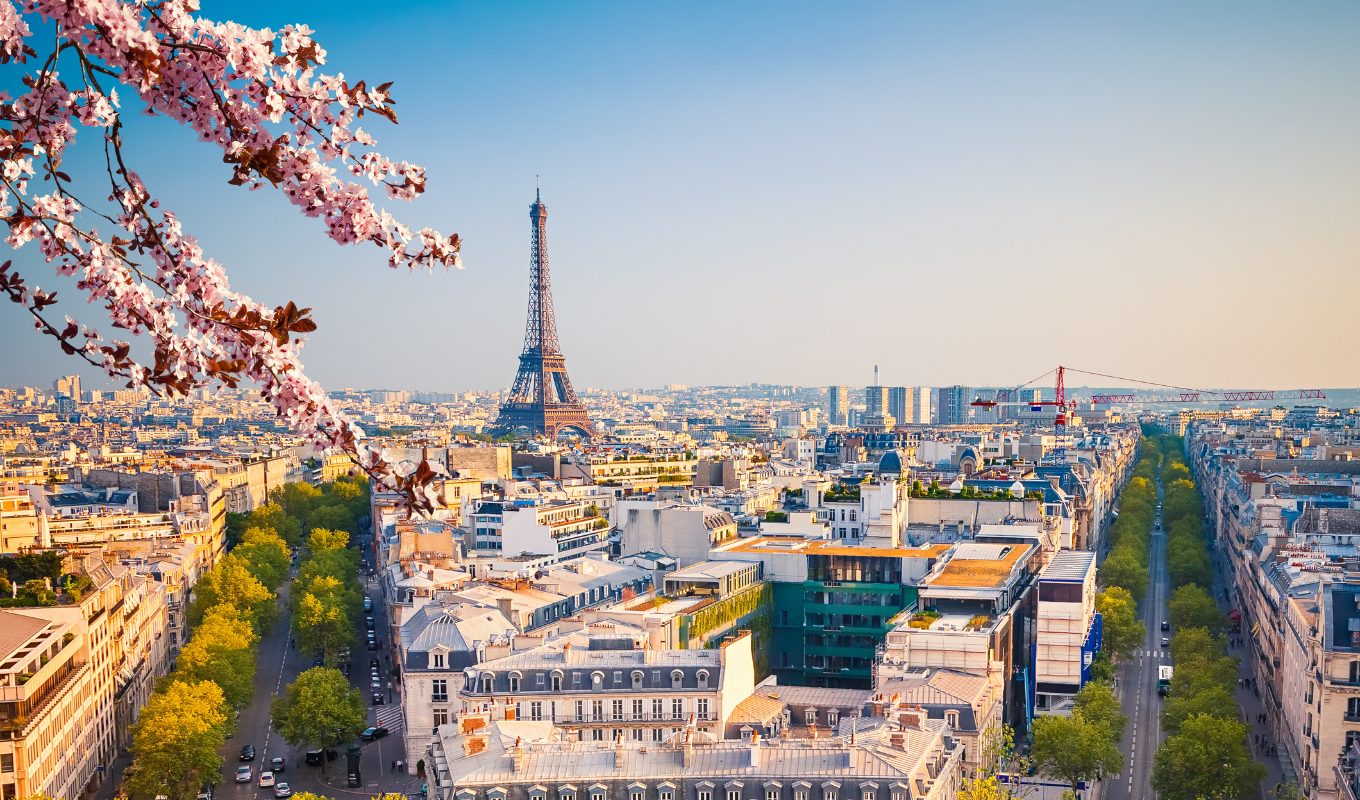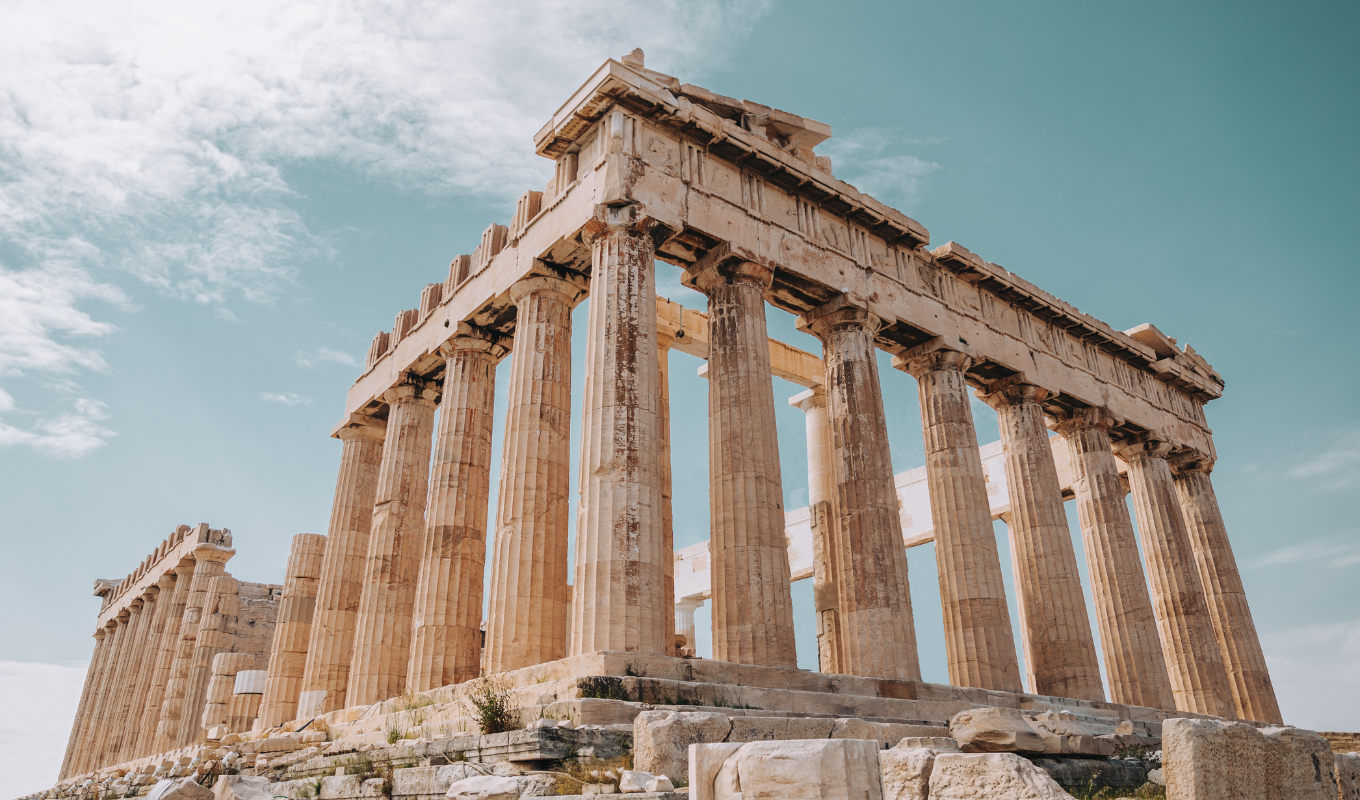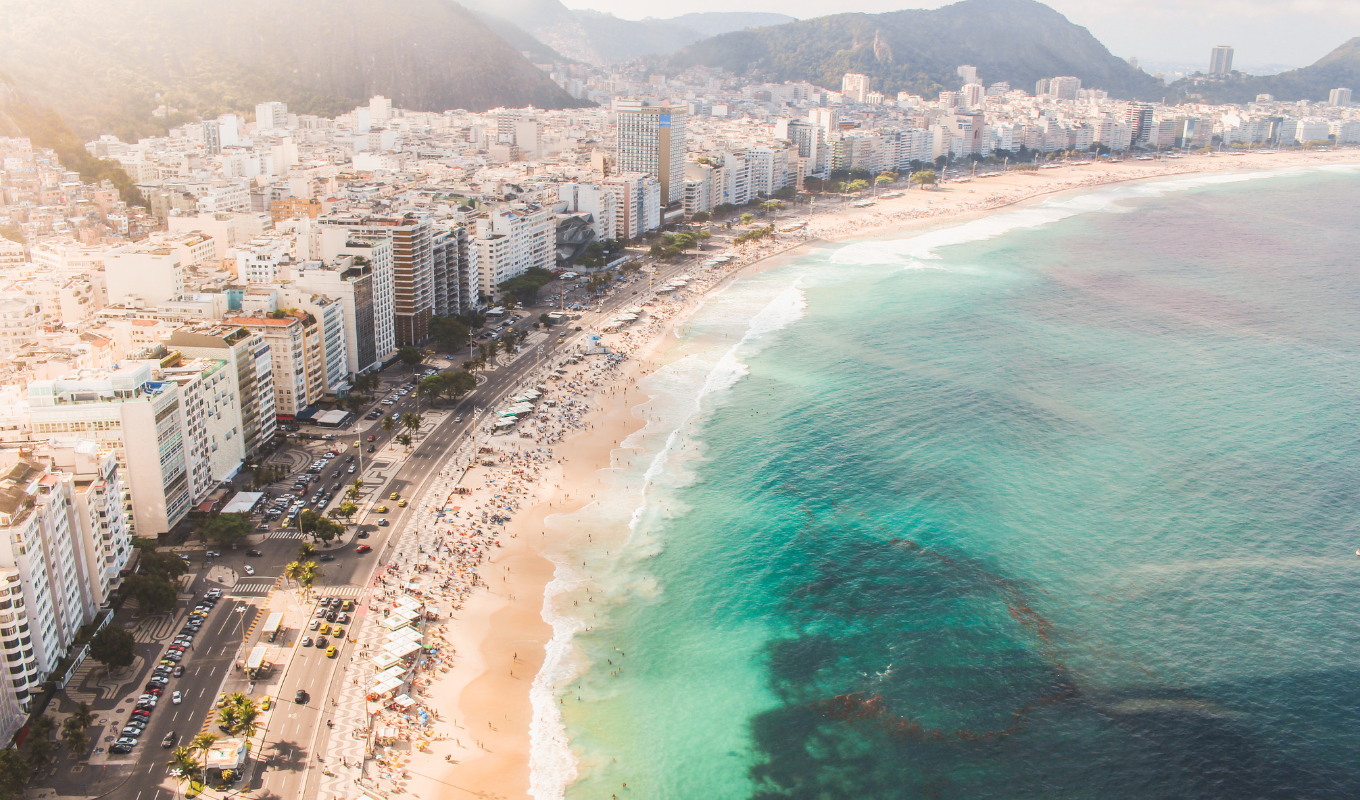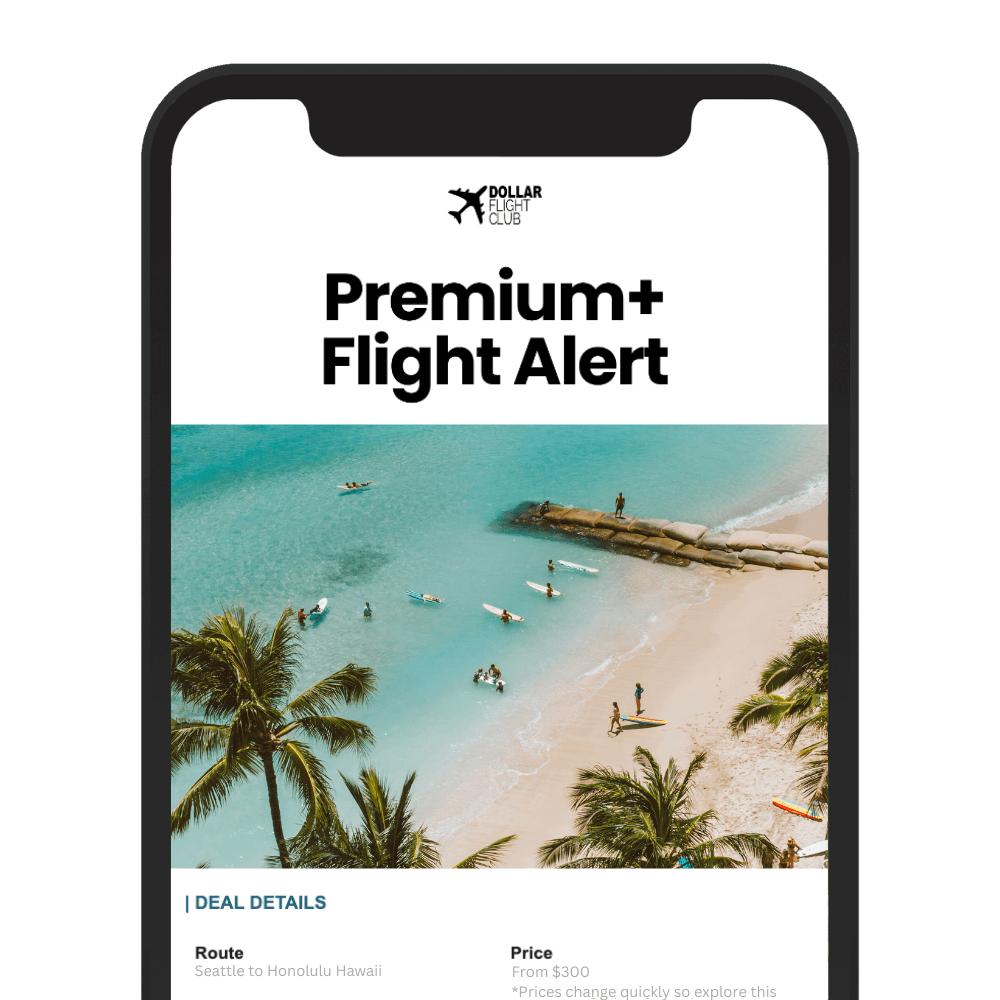Planning a trip to Paris? Here’s what you need to know, fast:
- Best Time to Visit:
- Spring (April–May): Mild weather, blooming gardens, fewer crowds.
- Summer (June–August): Warm, long days, but busy and pricey.
- Fall (September–October): Crisp weather, fall colors, fewer tourists.
- Winter (December–February): Quiet, low prices, magical holiday lights.
- Top Attractions:
- Eiffel Tower: Iconic views, book tickets online to skip lines.
- Louvre Museum: Largest museum in the world; visit on evenings for smaller crowds.
- Notre-Dame Cathedral, Arc de Triomphe, Sacré-Cœur Basilica: Must-see landmarks.
- Hidden Gems:
- Canal Saint-Martin, local markets, covered passages, and smaller museums like Musée Rodin.
- Money-Saving Tips:
- Use Metro passes for affordable travel.
- Eat at markets or try lunch menus for $22–$33.
- Visit during off-peak months (November–March) for lower prices.
- Getting Around:
- The Metro is efficient and cheap ($2.35 per ride).
- Navigo Easy card or Paris Visite pass offers unlimited travel options.
- Budget Breakdown:
- Daily Costs: Budget travelers: $113/day; Mid-range: $301/day; Luxury: $854+/day.
- Accommodation: Hostels from $54/night, mid-range hotels from $130/night.
- Food: Bakery treats from $1.10, simple meals $22+.
- Day Trips:
- Versailles: Opulent palace and gardens.
- Champagne Region: Wine tastings in Reims.
- Giverny: Monet’s gardens.
- Normandy: D-Day beaches.
Quick Travel Tips:
- Learn basic French phrases like “Bonjour” and “Parlez-vous anglais?”
- Avoid pickpocketing scams; stay alert in crowded areas.
- Tipping is minimal; service charges are often included.
Paris offers iconic landmarks, rich culture, and hidden treasures for every traveler. Whether you’re on a budget or splurging, thoughtful planning ensures your trip is unforgettable.
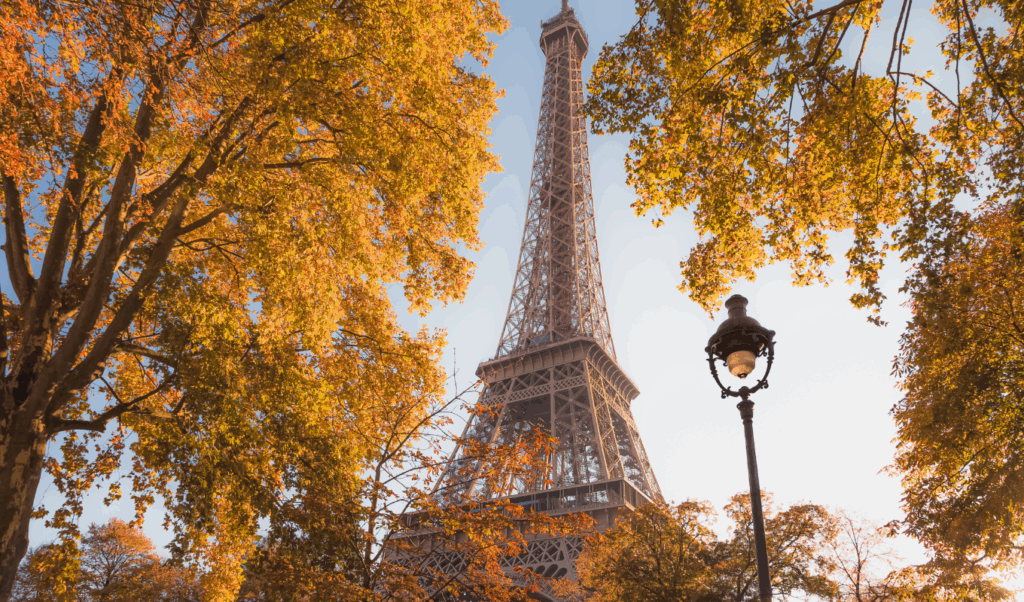
When to Visit Paris
Timing your Paris trip can make all the difference between navigating through crowds or enjoying a more peaceful experience. With over 30 million visitors each year, understanding when to go can help you plan smarter and even save a few bucks.
Weather by Season
Paris has four distinct seasons, each offering something special depending on what kind of experience you’re after.
Spring (April–May) is all about mild weather and blooming gardens. This is a great time for leisurely strolls, outdoor cafés, and moderate prices. Plus, you’ll avoid the heavy summer crowds, making it perfect for those who enjoy a quieter vibe.
Summer (June–August) is when Paris is at its warmest, with highs reaching the upper 70s°F. Long daylight hours make it ideal for sightseeing, but expect bigger crowds and higher prices. Be prepared for occasional heat waves during these months, and don’t forget that July tends to be one of the rainiest months in Paris.
Fall (September–October) is a favorite for many. The weather is crisp and pleasant, the fall foliage adds charm to spots like the Luxembourg Gardens, and tourist numbers start to dip. If you’re lucky, you might even catch Paris Fashion Week.
Winter (December–February) is much quieter, with temperatures averaging in the 30s°F to 40s°F. While it’s chilly, you’ll find lower prices and less crowded streets, especially in January and February. Holiday lights and Christmas markets, particularly around the Champs-Élysées, make this season magical.
Paris gets measurable rain about 110 days a year, so no matter when you visit, packing a waterproof jacket is always a good idea.
Events and Festivals
Paris is alive with over 400 festivals every year, offering countless ways to dive into local culture beyond the usual tourist stops.
- Fête de la Musique (June 21st): The city becomes a massive stage, with free music performances of all genres popping up everywhere – from parks to metro stations.
- Bastille Day (July 14th): Celebrate French pride with a military parade on the Champs-Élysées and a dazzling fireworks show near the Eiffel Tower.
- European Heritage Days (September): Gain free access to historical sites usually closed to the public, uncovering hidden architectural gems and Parisian history.
- Fête des Vendanges à Montmartre (October): Celebrate the grape harvest with wine tastings, parades, and festivities in the artistic Montmartre district.
- Nuit Blanche (early June): This all-night arts festival showcases contemporary installations and performances across the city, with museums staying open late and art popping up in unexpected places.
Some events require advance tickets, so check schedules ahead of time.
How to Avoid Crowds
A little planning can go a long way in helping you enjoy Paris without the overwhelming crowds.
- Travel off-peak. Visit between November and March for a quieter experience, steering clear of the December holiday rush.
- Start early. Hit major landmarks first thing in the morning, or explore alternative attractions like the Petit Palais or Tour Montparnasse for stunning views without the throngs. For a peaceful water experience, opt for a boat ride along the Canal St.-Martin instead of the Seine River.
- Discover lesser-known areas. Wander neighborhoods like the 14th arrondissement (Observatoire), 15th (Vaugirard), or 19th (Buttes-Chaumont) to soak in authentic Parisian life away from tourist hotspots.
- Time your museum visits wisely. The Louvre stays open until 9:45 PM on Wednesdays and Fridays, and evening hours typically mean smaller crowds. At Musée d’Orsay, the upper floors are often less busy than the main galleries.
- Avoid school holidays. Paris falls in zone C for French school vacations, so check these dates before booking. International school breaks, like spring break, can also draw more families.
For dining, try eating earlier or later than traditional French meal times. Many bistros serve the same delicious food but with a more relaxed atmosphere during off-peak hours.
Next, we’ll cover tips on finding affordable flights and selecting the best accommodations for your Paris adventure.
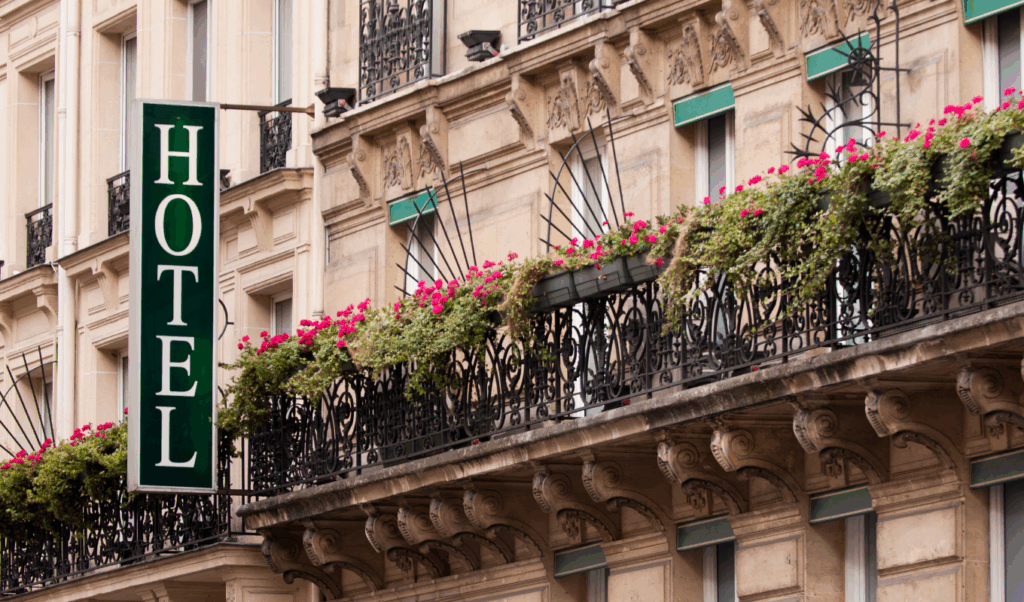
Planning Your Paris Trip
Once you’ve decided when to go, it’s time to sort out the details of your trip. A little extra effort in planning can make your Paris adventure smoother and more affordable. From snagging budget-friendly flights to picking the right neighborhood to stay in, these choices can shape your experience.
Finding Cheap Flight Deals
Scoring a great deal on flights often comes down to being flexible with your travel dates. Adjusting your schedule can unlock cheaper fares and make a big difference in your budget.
When it comes to booking, timing is key. Aim to book your flights 20 to 40 days in advance. Interestingly, flights booked on Mondays can save you up to $91. As for departure days, flying on a Wednesday could save you as much as $32 compared to weekends. Tuesdays and Wednesdays generally offer the best prices, while Fridays and Saturdays tend to be more expensive.
Consider using tools like Dollar Flight Club, which tracks flight prices and sends alerts for huge discounts. Their Premium+ plan costs $99 per year and can help you save up to 90% on mistake fares.
Paris has three main airports: Charles de Gaulle (CDG), Orly (ORY), and Beauvais-Tillé (BVA). While CDG is the primary international hub, checking flights to the other airports might reveal better deals. Just remember to factor in the cost of getting to the city center when comparing options.
To maximize savings, try these tips: browse in incognito mode to avoid price hikes from tracking cookies, compare prices across multiple platforms, and don’t overlook budget airlines like French Bee or Norwegian Air. You can find one-way flights to Paris for as low as $134, with round-trip tickets averaging around $332.
Where to Stay in Paris
Paris is divided into 20 arrondissements, each offering a unique vibe and price range. Picking the right area can save you time and enhance your experience. Your choice will depend on your budget, travel style, and what you want to do during your stay.
If you want to be close to major attractions, the 1st arrondissement is ideal, though it comes with higher prices. For a lively atmosphere with dining and nightlife, Le Marais is a fantastic central option.
Looking for something central but slightly more affordable? The 2nd arrondissement (Sentier & Montorgueil) is a great pick, offering a vibrant atmosphere and lower accommodation costs compared to the 1st. Food lovers will appreciate the Les Halles area, which spans the 1st and 2nd arrondissements, thanks to its market streets and diverse dining options.
For travelers on a budget, the 5th arrondissement (Latin Quarter) is a solid choice. It’s a bit farther from some attractions and has fewer metro connections, but it offers affordable stays and a youthful vibe. The 9th arrondissement (Opéra) is another value-packed option with a central location and lively nightlife, though it’s less polished and has fewer major sights.
Fashion lovers might gravitate toward the 8th arrondissement (Golden Triangle & Champs-Élysées) for its luxury boutiques and museums, while families will enjoy the parks and kid-friendly activities in the 6th arrondissement (Saint Germain des Prés).
For a romantic escape, Montmartre in the 18th arrondissement offers charming streets and breathtaking views. It’s more affordable, but it’s farther from key attractions and has steep hills. The 7th arrondissement, home to the Eiffel Tower, provides a quieter setting, though accommodation prices are higher, and travel to other sights takes longer.
Nightlife enthusiasts should check out Pigalle in the 9th arrondissement or Oberkampf in the 11th arrondissement for vibrant after-dark options.
Keep in mind that hotel prices vary by season. Summer tends to be the most expensive time to visit, even for budget accommodations. Late fall through early spring often brings better deals, especially at 4-star and 5-star hotels.
Getting Around the City
Paris is a city best explored on foot, but for longer distances, the Metro is your go-to option.
The Paris Metro is a highly efficient way to get around, with 16 lines and over 300 stations. It’s the second busiest metro system in the world, with more than four million trips made daily. Operating hours are from 6 a.m. to about 12:45 a.m. on weekdays and 1:45 a.m. on Fridays and Saturdays.
To pay for rides, grab a Navigo Easy card for €2 and load it with travel credits. Single tickets cost €1.90, and a pack of 10 t+ tickets is €16 for adults or €8 for kids. For longer stays, consider a one-day Mobilis pass for zones 1-2 at €7.30 or a Paris Visite Pass for unlimited travel over 1, 2, 3, or 5 days.
Buses are another great option, offering scenic routes and longer operating hours than the Metro. The RATP operates 59 bus lines across Paris and its suburbs. Just remember to wave at the driver to signal you want to board. Though slower than the Metro, buses are perfect for sightseeing or reaching areas not served by the subway.
For trips to the suburbs or airports, the RER train network is your best bet. It’s an affordable way to get to Charles de Gaulle or Orly airports.
Taxis and ride-sharing services like Uber are available but can be pricey due to traffic. Taxi meters start at €2.60, with additional charges per kilometer. Uber fares are comparable to traditional taxis in Paris.
For something different, hop on the Batobus, a boat service along the Seine, or rent a Vélib’ bike from one of thousands of stations. Cycling is a fun way to explore, but be cautious of the busy streets.
Stay vigilant for pickpockets, especially in crowded Metro stations and trains. And if you’re thinking about driving in Paris, be warned – parking is expensive and hard to find.
Once you’ve mastered the city’s transport options, you’ll be ready to dive into all the amazing attractions Paris has to offer.
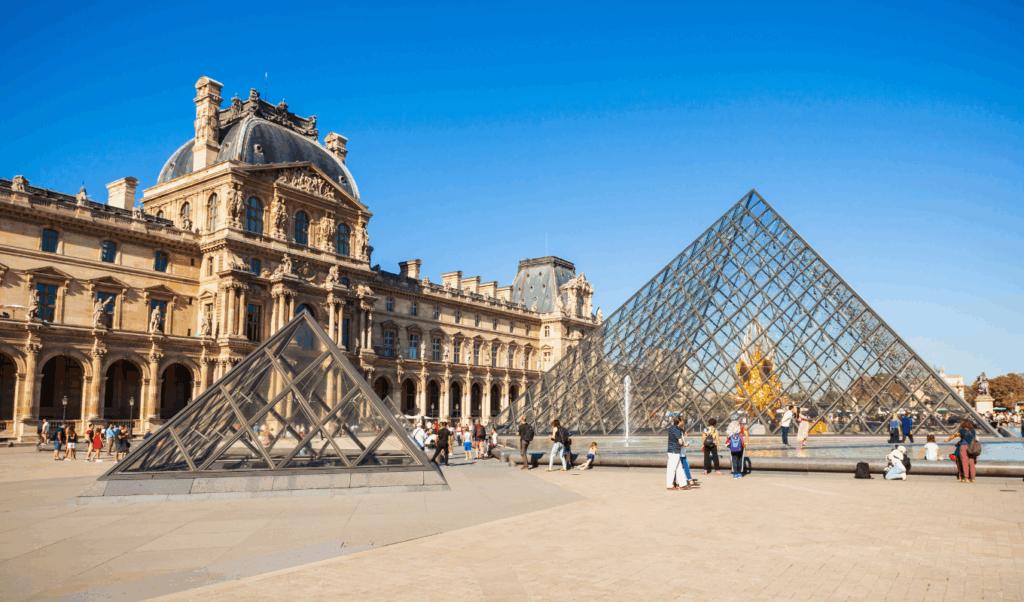
Top Paris Attractions and Activities
Now that you’ve got the hang of navigating Paris, it’s time to dive into what makes the city so enchanting. From iconic landmarks that have charmed visitors for centuries to tucked-away treasures loved by locals, Paris has something for everyone.
Famous Landmarks
The Eiffel Tower is undoubtedly Paris’s crown jewel, drawing millions of visitors annually. Standing 1,063 feet tall, this intricate iron structure is made up of 18,000 individual metal pieces. It offers breathtaking views of the city from multiple levels. To avoid long lines, book your tickets online at least two months in advance. Prices start at $105.
The Louvre Museum, the largest and most visited museum in the world, is a must-see. With 35,000 works of art spread across 350 rooms, it’s best to plan your visit by focusing on specific exhibits or sections. If you want to dodge the biggest crowds, consider visiting on a Wednesday or Friday evening. Tickets start at $45.
Notre-Dame Cathedral remains one of the finest examples of Gothic architecture. While interior access may be restricted, the cathedral’s stunning façade and its location on Île de la Cité are worth the visit.
Other unmissable landmarks include the Arc de Triomphe, which serves as the grand centerpiece of the Champs-Élysées, and the Sacré-Cœur Basilica in Montmartre, offering sweeping views of the city. The Panthéon is another standout, with its impressive vantage points over Paris.
Ready to go beyond the classics? Let’s explore hidden gems and local favorites.
Hidden Spots and Local Activities
Paris isn’t just about its iconic sights. The city’s lesser-known corners offer a chance to experience its soul. Start with the local markets, or marchés, where you can sample fresh produce and Parisian delicacies.
For a more relaxed vibe, take a boat ride along the Canal Saint-Martin. Lined with trees and trendy cafés, it’s a peaceful escape from the bustling tourist hubs. Parks like Parc Monceau and Parc des Buttes-Chaumont provide idyllic spots for picnics or a slow afternoon stroll.
If you’re in the mood for a bit of shopping and history, explore Paris’s covered passages, such as Passage Jouffroy, Passage des Princes, and Passage des Panoramas. These 19th-century galleries are home to charming boutiques, bookshops, and quaint cafés. For a touch of Parisian tradition, attend an organ performance at historic churches like St. Sulpice or Saint-Germain L’Auxerrois.
To truly immerse yourself in Parisian life, adopt the flâneur lifestyle – wandering aimlessly through the city. You’ll stumble upon hidden courtyards, cozy bistros, and other delightful surprises. Art lovers will appreciate smaller, less crowded museums like Musée Carnavalet, Musée Rodin, or Musée d’Art Moderne de Paris, which offer a more intimate look at Paris’s artistic heritage. And for foodies, a dessert crawl through local patisseries is the perfect way to indulge in authentic French pastries away from the tourist-packed bakeries.
Finally, don’t miss spending time along the Seine. Whether you’re lounging on its banks or strolling its picturesque quays, it’s a quintessential Parisian experience.
Day Trips from Paris
If you’re looking to venture beyond the city, Paris is perfectly situated for memorable day trips that showcase the rich history and charm of the surrounding region.
Versailles tops the list, with its opulent palace and beautifully manicured gardens. Tours start at $115 per person, and booking in advance is essential, especially during the busy season from April to October.
For wine enthusiasts, the Champagne region is a must-visit. In Reims, you’ll find 200 million bottles of champagne aging in 250 miles of underground caves. Blue Fox Travel offers day trips starting at €230, which often include stops at Reims Cathedral, local wineries, and the Nicolas Feuillatte Champagne House, complete with tastings.
Art and garden lovers will adore Giverny, where Claude Monet’s house and gardens bring the Impressionist master’s inspirations to life. Half-day trips to this serene destination start at €65 per person.
History buffs can head to Normandy for a profound experience at the D-Day landing beaches. Guided tours start at $145 per person, offering a deep dive into this pivotal moment in history.
For families, Disneyland Paris offers a blend of culture and fun. Day trips with transportation are available through various tour operators, or you can opt for a private ride if you prefer a more tailored experience.
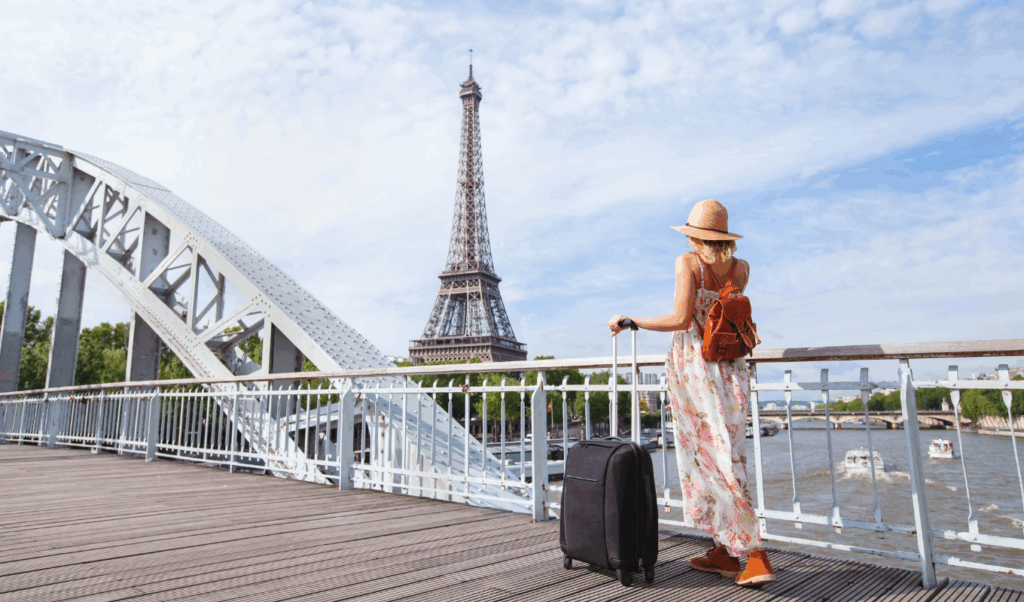
Budget and Money-Saving Tips
Paris doesn’t have to drain your wallet. With some savvy planning and a bit of know-how, you can enjoy the City of Light without overspending. The trick lies in understanding where your money goes and making choices that maximize your experience while keeping costs manageable.
Expected Travel Costs
When budgeting for Paris, it helps to have a ballpark idea of daily expenses. On average, visitors spend about $275 per day, covering meals, transportation, and activities. Of course, your actual spending will depend on your travel style:
- Budget Travelers: Around $113 per day, staying in hostels, eating at markets, and focusing on free attractions.
- Mid-Range Travelers: Roughly $301 per day, enjoying comfortable hotels and restaurant meals.
- Luxury Travelers: About $854 per day (or more) for premium experiences.
Here’s a closer look at typical costs:
Accommodation:
- Hostel dorm beds: $54–$71 per night.
- Budget hotels: $100–$200 per night.
- Mid-range hotels: $130 per night during regular seasons, rising to $250 in peak times.
- Luxury hotels: Starting at $350+ per night.
- Airbnb apartments: Typically $75–$105 per night.
Food:
- Average daily food costs: $83.
- A simple lunch menu (formule or menu du jour): $22–$33.
- Dinner (without drinks): About $22 per meal.
- Street food options: $5.50–$8.80, with bakery items like croissants priced at $1.10–$2.20.
Transportation:
- Single Metro ticket: Around $2.35, or $19 for a 10-pack.
- Paris Visite pass (unlimited travel): Starting at $15.20.
Attractions:
- Eiffel Tower: $16–$26, Louvre: $17, Arc de Triomphe: $13.
- General sightseeing and entertainment: An average of $88 per person per day.
Knowing these costs can help you decide whether a city pass might save you money.
Paris City Pass Comparison
City passes are a great way to save if you’re planning to visit multiple attractions. Choosing the right pass depends on your itinerary. Here are some popular options:
| Pass | Price | Duration | Ideal For | Key Benefits |
|---|---|---|---|---|
| Paris Museum Pass | $77 (2 days), $99 (4 days), $121 (6 days) | 2–6 days | Museum lovers | Skip-the-line access to 60+ museums; pays off after 4–6 visits |
| Go City Explorer Pass | From $87 | Flexible | Selective visitors | Choose 3–7 attractions; valid for 60 days |
| Go City All-Inclusive Pass | From $98 | 1–6 days | Intensive sightseeing | Access to 47 attractions with unlimited entry during validity |
| Go City All-Inclusive Pass Plus | From $219 | 1–6 days | Maximum coverage | Includes Museum Pass plus 47 attractions |
| Paris Passlib’ Discover | $65 | 3 days | First-time visitors | Covers 3 activities, such as a Seine cruise |
| Paris Passlib’ City | $120 | 5 days | Classic attractions | Includes 5 key attractions like the Eiffel Tower and the Louvre |
For art and history buffs, the Paris Museum Pass is a solid choice, offering value after just a few visits. Meanwhile, the Go City Explorer Pass works well if you prefer a flexible, pick-and-choose approach. Before committing to a pass, compare its cost with individual ticket prices to ensure you’re saving.
Eating on a Budget
Once you’ve got your overall budget sorted, it’s time to tackle dining. Paris is famous for its food, and you don’t need to spend a fortune to enjoy it. Here are some tips:
- Lunch menus: Many restaurants offer a multi-course formule or menu du jour for $22–$33, giving you a delicious taste of French cuisine at a reasonable price.
- Local markets: Assemble a picnic with artisanal cheeses, fresh bread, and seasonal produce for under $15 per person.
- Bakery finds: Croissants cost about $1.10–$2.20, and a baguette sandwich runs between $4 and $6.
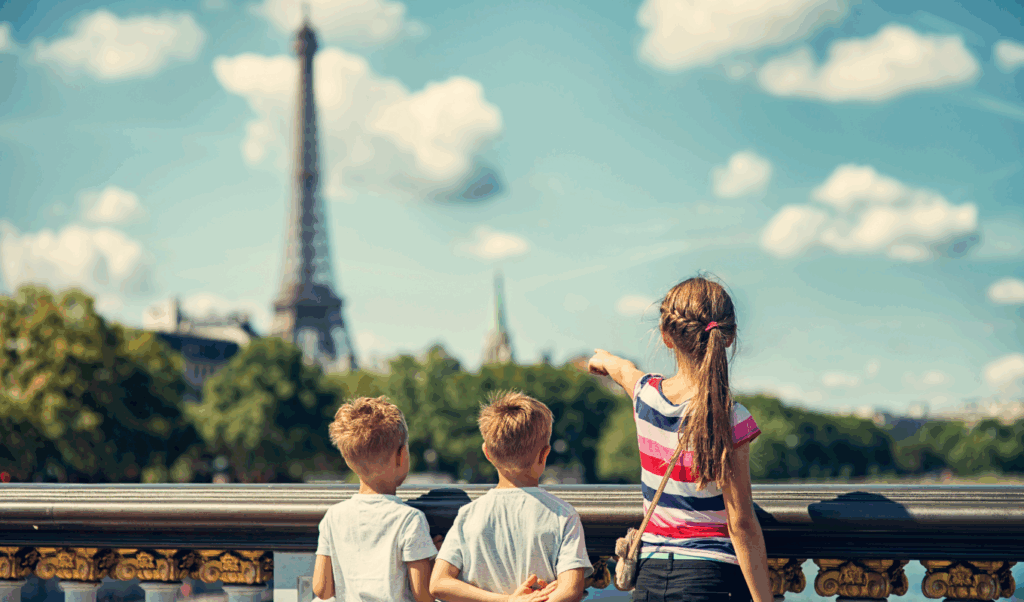
Travel Tips for U.S. Visitors
Once you’ve planned your trip, these tips can help you navigate Paris with ease, much like its well-organized Metro system. Understanding local customs and some basic French phrases will go a long way in helping you connect with Parisians and make the most of your visit.
Customs and Basic French Phrases
French culture tends to emphasize formality more than what you might be used to in the U.S. It’s customary to greet staff with a friendly “bonjour” when entering a shop or restaurant and to say “au revoir” when leaving. Skipping these small gestures can come across as impolite.
Dining in Paris is a more leisurely and social experience compared to the U.S. Expect meals to take longer, and don’t rush through dinner or anticipate speedy service. Parisians generally keep a low profile in public, so don’t be surprised if they seem reserved – it’s just part of the local demeanor. Speaking softly in public spaces is also appreciated.
Even if your French skills are minimal, learning a few key phrases can make a big difference. In fact, 72% of expats in Paris reported that knowing basic French helped them adjust more easily. While about 39% of French people can communicate in English, making an effort to speak their language often leads to warmer interactions.
Some handy phrases include:
- “Une carafe d’eau” (a pitcher of tap water, which is free in restaurants)
- “Excusez-moi” (excuse me)
- “Parlez-vous anglais?” (do you speak English?)
These small efforts can help you navigate Parisian life more smoothly.
Money, Tipping, and Payments
Understanding local tipping and payment practices can make your trip more seamless. In France, a 15% service charge is automatically included in the prices at cafés, restaurants, and bars, ensuring that servers receive a fair wage with benefits. While tipping isn’t required, leaving an additional 5–10% for exceptional service is a thoughtful gesture.
For other services:
- Round up taxi fares.
- Tip tour guides $5 per person.
- Offer hotel concierges $2–$5 for assistance.
- Give bellhops $1–$2 per bag.
- Leave $1–$2 per night for housekeeping.
When exchanging money, ATMs typically offer the best rates. Avoid currency exchange services at airports or hotels, which often have higher fees. Check with your bank about any international ATM charges and always choose to be charged in euros rather than dollars for better rates. While credit cards are widely accepted, it’s wise to carry some cash for smaller shops or tips, as gratuity can’t always be added to card payments.
Lastly, always check your bill for “service compris” to confirm the service charge is included. French law prohibits additional gratuity charges.
Safety and Accessibility Tips
Paris is a generally safe city for tourists, with violent crime rates lower than those in many major U.S. cities. However, pickpocketing and tourist scams are the most common issues to watch out for.
Some scams to be aware of include:
- Petition scams: Someone asks you to sign a petition, then demands a donation.
- Bracelet scams: A vendor places a bracelet on your wrist and insists you pay for it.
- Gold ring scams: A stranger “finds” a ring and asks for a reward.
To avoid these situations, use anti-theft bags, keep valuables out of sight, and remain vigilant on the Metro, especially when the doors are about to close. At night, stick to well-lit, busy streets and rely on official taxis or trusted ride-sharing apps. It’s also a good idea to carry a photocopy of your passport and keep it separate from the original.
Some of the safest neighborhoods for visitors include:
- Le Marais (3rd & 4th Arrondissements)
- Saint-Germain-des-Prés (6th)
- The 7th Arrondissement
- The Latin Quarter (5th).
If you come across protests during your visit, don’t worry. These demonstrations are typically aimed at the government and rarely involve tourists. Violence is uncommon.
For summer visits, pack light, breathable clothing since air conditioning isn’t widespread in older buildings. Be prepared for a few cultural differences: hotels may not provide washcloths or top sheets, ice isn’t served automatically with drinks, and outdoor areas often have noticeable cigarette smoke, as about 30% of French adults smoke daily.
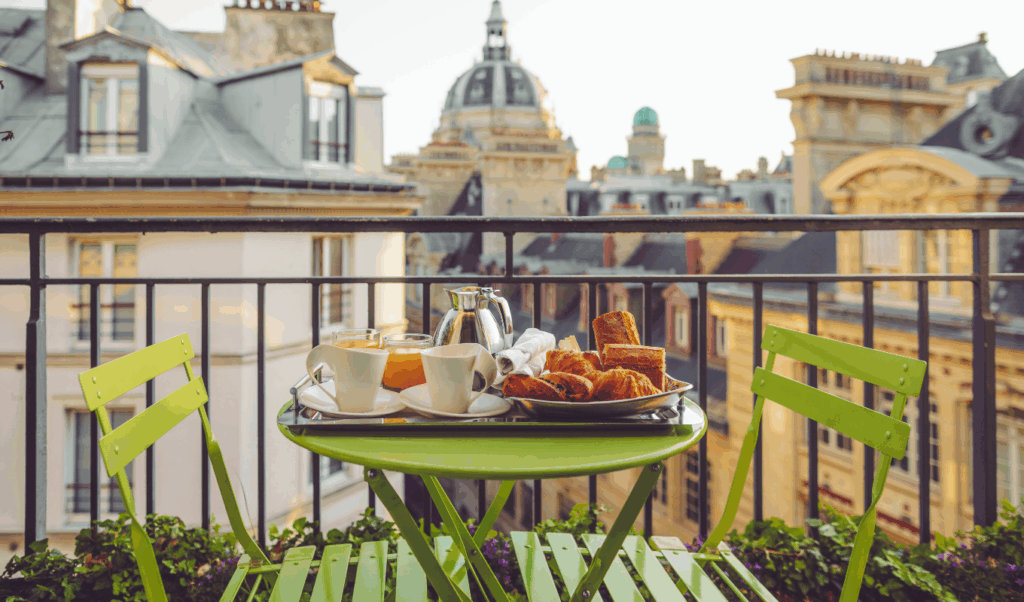
Conclusion: Making Your Paris Trip Memorable
Paris has a way of leaving an indelible mark on those who visit. Its charm lies not just in its iconic landmarks but in its vibrant streets, cozy cafes, and the rhythm of everyday life. To make the most of your trip, it’s all about finding the right balance between thoughtful planning and embracing the unexpected.
Start by booking major attractions and accommodations ahead of time to avoid last-minute stress. But don’t over-schedule – leave room to wander and stumble upon hidden gems like quaint markets, tucked-away bistros, or the artistic flair of neighborhoods like Montmartre, Le Marais, and the Latin Quarter. These unplanned moments often become the highlights of any trip.
Smart planning can also help you stretch your budget while enjoying the best Paris has to offer. For instance, signing up for services like Dollar Flight Club can lead to incredible savings – some members have snagged roundtrip flights from Los Angeles to Paris for just $432, saving over $468. With millions of members projected to save $13 million by 2025, deals like these can free up funds for unforgettable experiences, whether it’s a serene Seine River cruise or a meal at a Michelin-starred restaurant.
Once you’re in the city, take advantage of the Metro and purchase a carnet for affordable and efficient travel. Learning a few basic French phrases can go a long way in connecting with locals. And don’t forget practical tips: dress for the season, keep your belongings secure in crowded areas, and remain adaptable to potential disruptions like strikes or closures.
Every decision you make – from scoring a great flight deal to picking the perfect arrondissement – brings you closer to experiencing Paris’s timeless magic. By blending careful preparation with a sense of adventure, you’ll create memories that will stay with you long after you’ve left the City of Light. Paris is a city meant to be savored, and with the right mix of planning and spontaneity, your trip will be nothing short of extraordinary.
FAQs
How can I find affordable flights to Paris, and when should I book?
To find budget-friendly flights to Paris, try booking your tickets 3 to 5 months ahead of your travel dates. Airlines often roll out discounted fares during this period, giving you a better chance to save. Also, consider flying midweek, as weekday flights are usually less expensive than weekend options.
For even lower prices, plan your trip during the low season, which runs from January to March. During these months, fewer travelers mean lower demand, and that often translates to cheaper fares. Another smart tip? Set up fare alerts to keep track of price drops and snag a deal the moment it appears.
What are the most affordable neighborhoods to stay in Paris that are close to major attractions?
If you’re searching for wallet-friendly spots in Paris that still keep you connected to the city’s main attractions, take a look at the 9th, 10th, or 18th arrondissements. These neighborhoods strike a solid balance between affordability and convenience, offering budget accommodations while keeping you within easy reach of landmarks like Montmartre and the Opéra Garnier.
For even greater savings, consider nearby suburbs like Asnières-sur-Seine or Ivry-sur-Seine. These areas tend to be easier on the budget and still provide quick transit options into central Paris, making them a smart choice for travelers aiming to save money without giving up easy access to the heart of the city.
What are the best ways to experience Paris like a local and avoid tourist traps?
To get a genuine feel for Paris and steer clear of tourist-heavy spots, spend time wandering through the city’s delightful neighborhoods like Le Marais, Canal Saint-Martin, or Montmartre. These areas exude a true Parisian charm, filled with cozy cafes, unique boutiques, and bustling markets that locals frequent far more than tourists.
When it comes to dining, skip the restaurants clustered around major landmarks such as the Eiffel Tower or the Louvre. These places often come with inflated prices and less authentic flavors. Instead, explore the quieter streets to find hidden bistros and bakeries where you can savor French food as the locals do.
Be mindful when visiting popular attractions, as scams like pickpocketing or street vendors selling counterfeit items are common. Staying aware of your surroundings and venturing off the beaten path will not only help you avoid these pitfalls but also make your time in Paris more enriching and unforgettable.

